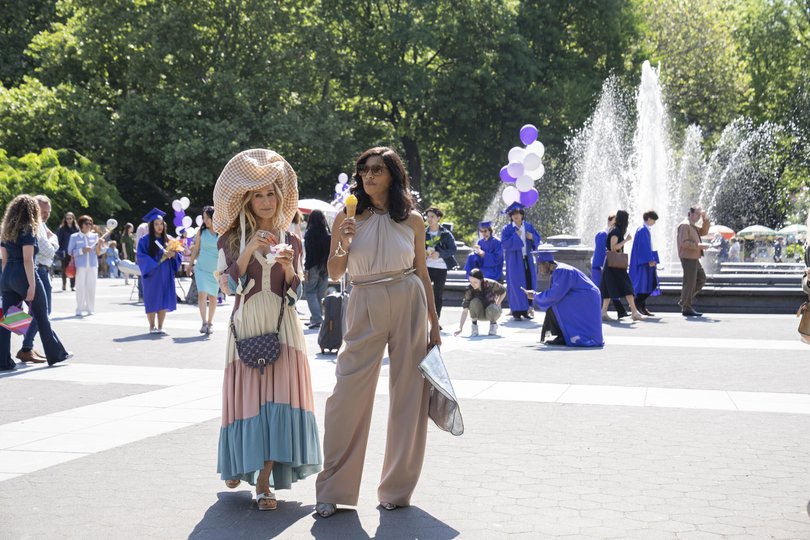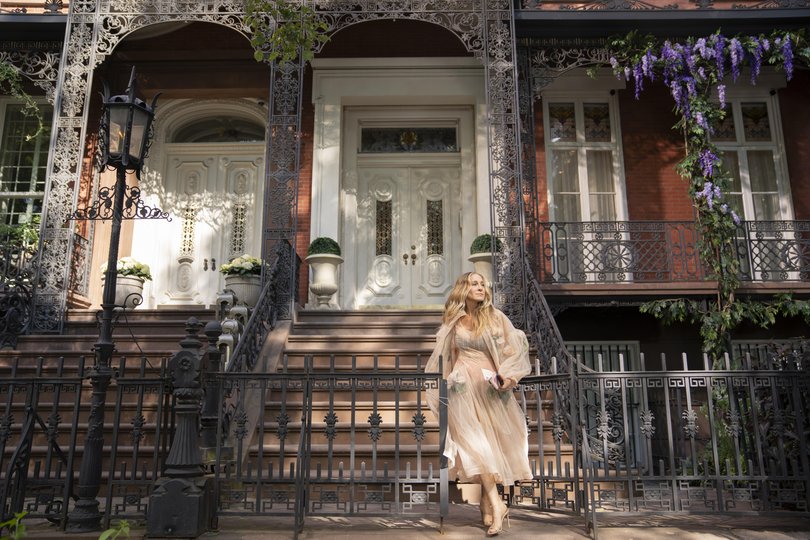And Just Like That season three: Sex and the City sequel show has no purpose and no connection

There’s a weird tension in And Just Like That, which has only gotten worse with age.
The Sex and the City sequel series lives in an extremely privileged world of uber-wealthy women in Manhattan whose wardrobes are replete with high-end designer brands – no, not Michael Kors or Kate Spade.
They never outfit repeat, they consume without pause and live the kind of fantasy that used to be chic.
Sign up to The Nightly's newsletters.
Get the first look at the digital newspaper, curated daily stories and breaking headlines delivered to your inbox.
By continuing you agree to our Terms and Privacy Policy.Calling And Just Like That aspirational is surely facetious at this point. How many among its audiences really believe that lifestyle is attainable? That they too will one day be able to grossly overpay for a college entrance consultant you’ll accidentally insult inside your palatial upper west side apartment .
Or that they might also face the dilemma of who to pick as their plus-one to the Met Gala?

No one who is watching And Just Like That will ever be in that position. OK, maybe not no one, maybe 34 people, but certainly not the millions of viewers whose lives bear little resemblance.
The show knows it too. There are two brands with prominent positioning in the third season that scream either product placement or bad writing.
One was for KFC, with Carrie (Sarah Jessica Parker) and Seema (Sarita Choudhury) eating a bucket in a hotel room after they were denied fried chicken by the restaurant downstairs. Another was for Target, when Carrie says her favourite swimsuit was from the affordable department store.
There was also a third brand that seemed anathema to the world of And Just Like That, and that’s fast-fashion company Shein. One of Charlotte’s (Kristin Davis) daughters is seen breaking down a delivery box clearly emblazoned with the name, but tells her sister off for the environmental damage caused by fast-fashion, so that one is up in the air.
What those scenes reveal is an acknowledgment that the And Just Like That audience is more about KFC, Target and Shein than they are about Proenza Schouler, Vivienne Westwood and Markarian.
Carrie declaring Target to be her favoured purveyor of swimwear does not make her more relatable, it makes the reference odd. It immediately bumps you out of the story because it doesn’t track for And Just Like That.
It might’ve for Sex and the City, but not for its follow-up.

Here’s the rub. While this third season of And Just Like That is better than its two predecessors, it still begs the question of whether any of this is really connecting to the women who made being a Sex and the City fan part of their personality.
The original series was bold and exciting, a fresh story in which a group of women friends tried to find their place in a big city, negotiating career challenges, dating men, revelling in their sexual desire and having fun. It never apologised for their mistakes or their agency.
It was always a specific slice of experience. The show was notoriously non-diverse and upper-middle-class but they had problems that were, if not always relatable, but at least recognisable. OK, maybe we weren’t mugged of our Manolo Blahniks but we could certainly understand the pain of losing something and then struggling to pay for the replacement.
Also, just noting that while a pair of Manolos can set you back $2000, when Seema is mugged of her Hermes bag in And Just Like That, you’re looking at $30,000, plus all the money you have to spend on shoes, blankets and the rest just to be allowed on the list to purchase.
There’s a reason that when Sex and the City was at the height of its cultural power, women often asked each other if they were a Carrie, a Miranda, a Charlotte or a Samantha. It might be silly, but there’s an inherent truth in the question.

The four characters represented distinct archetypes and we could see in them parts of ourselves. We could all be idealistic princess-types, ambitious career women, sexual vixens or intentionally child-free.
It gave women permission to aspire to characteristics and not just trips to Magnolia Bakery.
Can And Just Like That say the same? While it’s no longer trying to peddle the falsehood that Cosmopolitans were drinkable, it doesn’t serve the same purpose and it hasn’t found a new one.
It’s not relevant to many women’s experiences in 2025, barely even metaphorically. It actually tried through its exploration of grief and mid-life changes, but the execution was clunky and the audience just wanted them to go back to the way they were.
In many ways, it’s being dragged down by its own legacy. If And Just Like That had premiered as a new series exactly as it was but we had never before met these women, it wouldn’t be so disappointing, it would just be another flighty, diverting and not-very-good show.
You can’t go home again — the persistence of this odious Aidan (John Corbett) storyline proves it shouldn’t (ohmigod, please make him go away) — but unless you can evolve the show in a way that makes sense for both the characters and the world around them, what’s even the point.
Season three, or at least the first six episodes made available for review, has more of the vibe and rhythm of the original series — it moves along at a brisker pace with more self-contained subplots and often focuses on inconsequential things — so for many viewers, it’ll be a half-return to form.
It’s certainly more enjoyable, but it’s just a sugar hit that quickly subsides.
It will never come close to the cultural power and emotional connection of the original series, no matter how many KFC buckets it clumsily inserts. And just like that, it’s a great tragedy.
And Just Like That season three is streaming on Max from May 30

